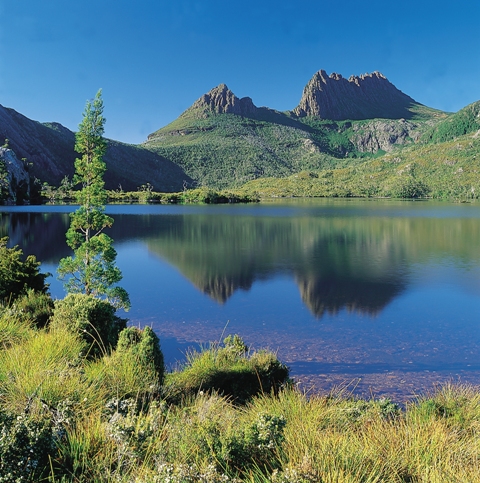
Want to go under the land down under? Join photojournalist David Bowden as he travels the scenic and fascinating island of tasmania.
It’s a little unusual arriving into Hobart International Airport on a domestic flight from mainland Australia. It’s further complicated when one discovers that there are no actual international arrivals into this Australian island state. Apparently there were flights from New Zealand once and the “international” remains in the name, perhaps in the hope that services may one day resume.
Alighting from the aircraft into the crisp morning Hobart air via steps (there are no air bridges either) is refreshing and provides even greater appeal as it is nature and clean air that is in obvious abundance in Tasmania. After a few days of travelling the state and meeting the friendly locals you get the impression that distance and isolation are qualities that so-called Taswegians are more than happy to accept. Indeed, many have relocated to green and clean Tassie because they want to escape the hustle and bustle of many other places around the globe. Tasmania is a United Nations of citizens, many of whom have specifically migrated here because it is far from the cares of the rest of the world.
Within a few days too you soon realise that the week you have allocated to exploring Tasmania isn’t going to be long enough and already you’re mumbling to yourself about what you will be doing when you make the return journey. It’s that sort of a place.
Capital Venture
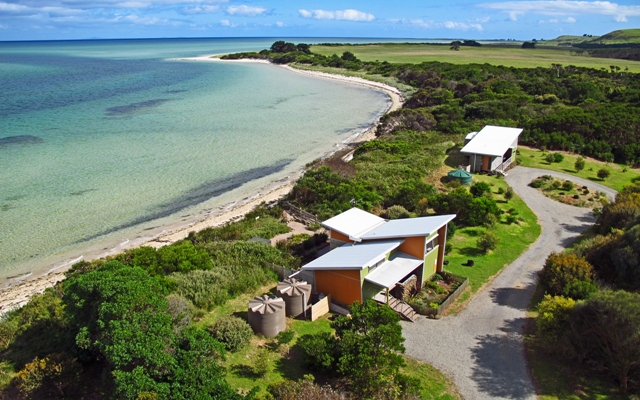
Hobart is Australia’s second oldest city after Sydney but with just 200,000 residents (Tasmania has 500,000 residents in all) there’s a wonderful sense of freedom. For example, fishing trawlers are moored within metres of Parliament House where urgent state matters are thrashed out. Hungry politicians can just about call out their lunch order to any number of ten seafood restaurants that take the fresh catch and prepare it for the hungry diners who flock here. Peak hour traffic involved waiting for something like three sets of traffic lights to change and seaplanes moor in front of the docks to take curious travellers sightseeing over the city. Crown Princess Mary of Denmark hails from Hobart and returns to shop and see friends without too much fuss.
Traffic-weary Malaysians will fall in love with laid back Hobart. Laid back doesn’t equate to nothing to do as I soon found out by heading across the broad expanse of the Derwent River on the Mona Roma to the city’s biggest attraction, MONA.
The Museum of Old and New Art is situated in the grounds of Moorilla Estate Winery on the harbour foreshore and it has, in its short history, changed the way international tourists perceive Hobart and Tasmania. Expect the unexpected with exhibitions that are designed to challenge the senses within a space that breaks down all art gallery barriers. If art isn’t for you, relax over a glass of estate-bottled Sauvignon Blanc or Moo Brew beer.
To orient myself, I took a sunset flight with Tasmanian Air Adventures which operates a beautiful small seaplane that departs from the dock front. It’s a strange feeling to step onto the plane and then to be airborne in a matter of minutes with Hobart sprawled out beneath the plane. Within minutes of returning from the 30-minute adventure I was tucking into some of the world’s freshest seafood at Mures overlooking the docks.
Devilish Tasmania
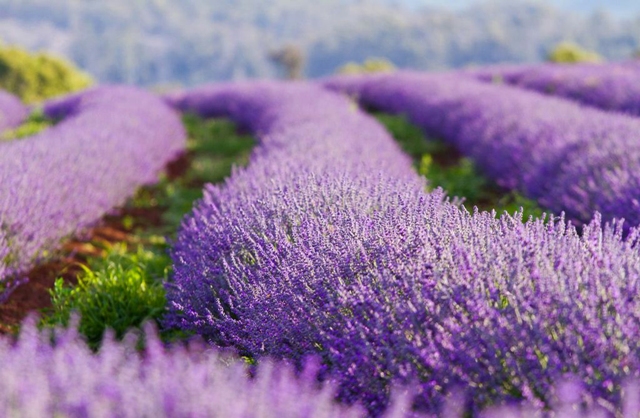
It just wouldn’t be Tasmania without seeing a Tasmanian Devil made famous as a Looney Tunes character. I didn’t have to travel far as Bonorong Wildlife Sanctuary is located at Brighton just north of Hobart. The sanctuary’s compact scale enabled me to tick off a few other animals from the ‘must see’ list including wombats, koalas, and kangaroos.
Already I was appreciating clean and green Tasmania and my next overnight stay at Curringa Farm was a working sheep and crop farm but with a dedicated nature reserve on it. Owners Tim and Jane Parsons are as enthusiastic about the wildlife refuge as they are about the sheep. After a nature walk and exhilarating sheep round up, it was time to settle into one of three houses on the farm that are available for visitors.
How The West Was Won
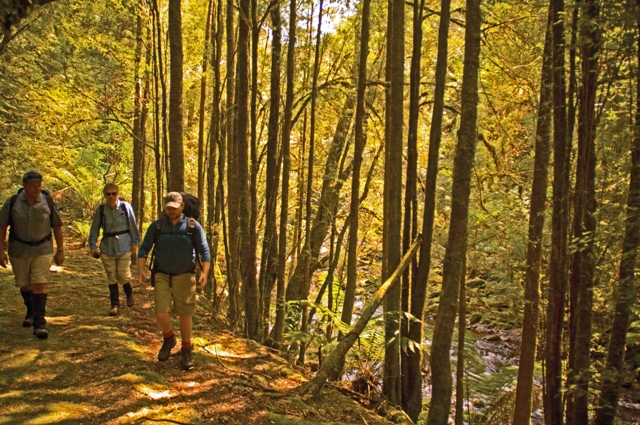
Curringa Farm is located in the highlands of Tasmania but a little fact Tim passed on made me realise how compact Tasmania really is. Apparently, no place in Tasmania is more than 115km from the sea. Reluctantly, I left Curringa Farm and headed west to see how it was won. Farming is important in Tasmania as is logging but with a large percentage of the state locked up as reserves, the environmental movement has had its day too. Bitter battles were staged in the 1970s to preserve the state’s unique natural heritage and Strahan near the Franklin-Gordon Wild Rivers National Park was my next port of call. Before that though I made a quick detour based upon Tim’s recommendation to Mount Field National Park in order to walk through an avenue of tree ferns and photograph Russell Falls.
After checking into Risby Cove in the small fishing-tourist town of Strahan it was time to relax over a cool Cascade beer, another product that Taswegians are rightly proud of. Cruising Macquarie Harbour and entering the national park is the reason why travellers journey all the way here. They are justly rewarded with a day-long cruise on the plush Lady Jane Franklin 11 operated by Gordon River Cruises. Views across the harbour are brilliant and it’s wonderful to admire the forests lining Gordon River. One of the highlights is to visit Sarah Island and to connect with Tasmania’s convict heritage where the worst of the worst were incarcerated.
Cradle Of Civilisation
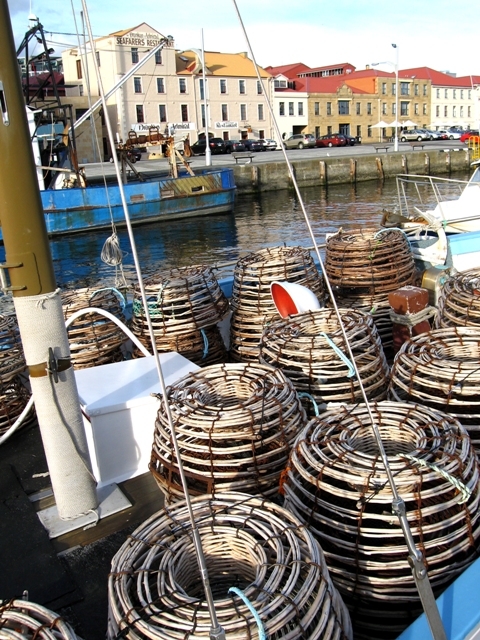
Another way to admire the harsh terrain is to head back to Queenstown early in the morning and then ride the West Coast Wilderness Railway which weaves and twists through the lush temperate forests. This journey, high above the King River, is a must for train buffs.
Through well-developed logistics the operator had me back at my Hertz rental car in Queenstown for a mid-afternoon drive to Cradle Mountain Lake St Clair National Park in the middle of the island. Just one of several UNESCO World Heritage Sites in Tasmania, this is the state’s most visited natural area. The jewel in the crown is Dove Lake and it’s a must to circumnavigate it. It only takes a few hours but with so many things to photograph, keen outdoors visitors could spend half a day around the lake.
While the area is all natural, visitors don’t have to go without any luxuries as I found while soaking my tired limbs in a spa bath at Cradle Mountain Wilderness Village. My dinner of Cape Grim beef and a bottle of Josef Chromy Pinot Noir at Cradle Mountain Chateau were just as pleasing.
Launceston And Tamar Valley
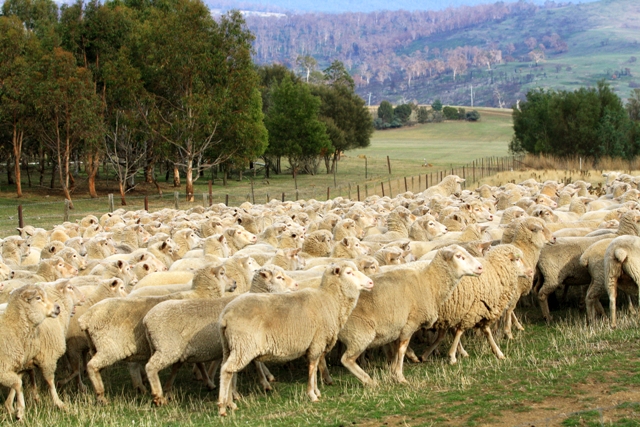
Time was running out and the cool temperate wineries of the Tamar Valley awaited. Most of the grapes for Australian sparkling wines are sourced in the Tamar Valley and still wines centred on Sauvignon Blanc and Pinot Noir varieties have made wine connoisseurs sit up and pay attention. I visited leading wine producers including Josef Chromy, Jansz, Delamere and Dalyrmple but used the services of Prestige Leisure Services in order to stay on the correct side of the law who keep an eager eye on wine-happy drivers.
Prestige Tours develop individualised tours in advance and this enabled me to also visit the picturesque Bridestowe Lavender Farm at Nabowla and the Tasmanian
Gourmet Sauce Company at Evandale near the Launceston Airport.
Fully laden with local produce from leatherwood honey to mountain pepperberry I checked in for my Virgin Airlines flight back to Melbourne and onto Kuala Lumpur already with plans developed to return to Tasmania to explore the east coast.
———————————————————————————————————
Source: The Expat July 2013
What are your thoughts on this article? Let us know by commenting below.No registration needed.
"ExpatGo welcomes and encourages comments, input, and divergent opinions. However, we kindly request that you use suitable language in your comments, and refrain from any sort of personal attack, hate speech, or disparaging rhetoric. Comments not in line with this are subject to removal from the site. "


















